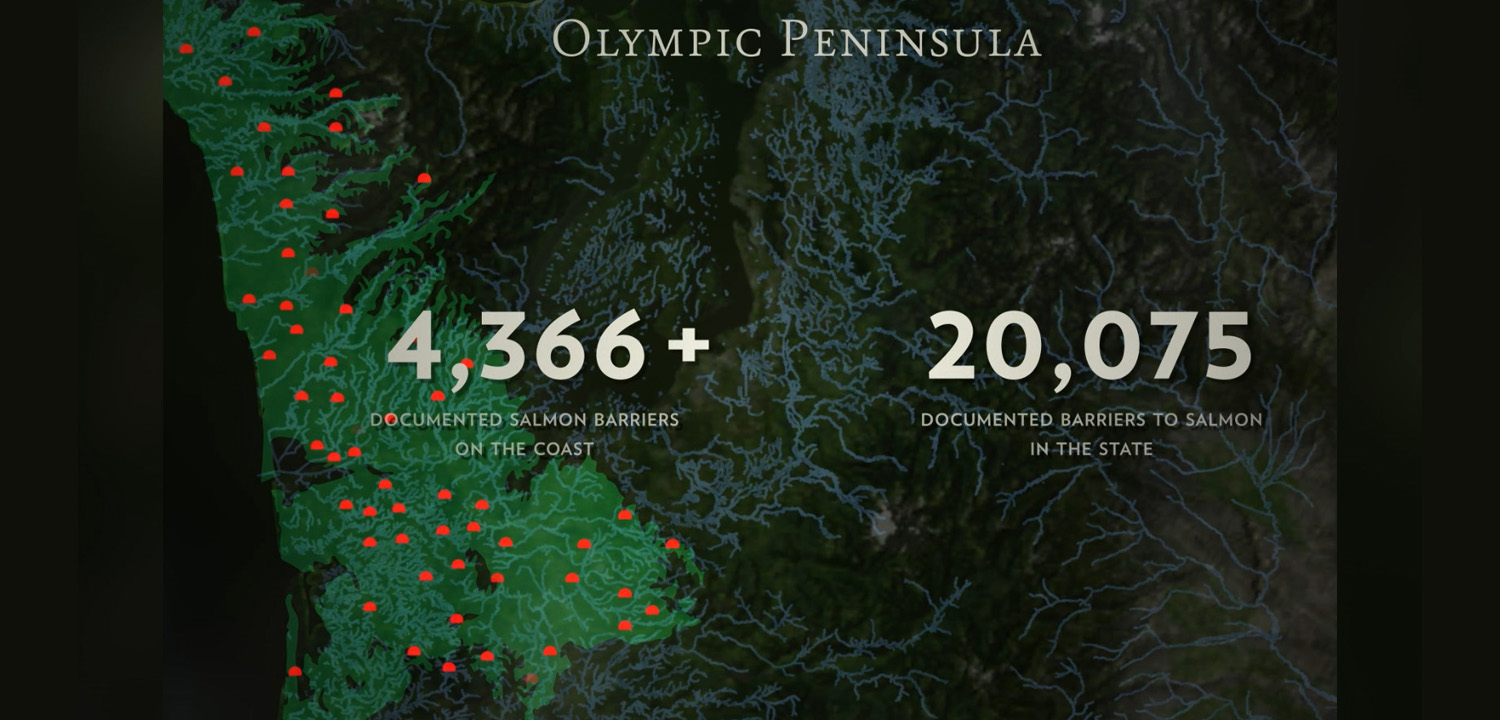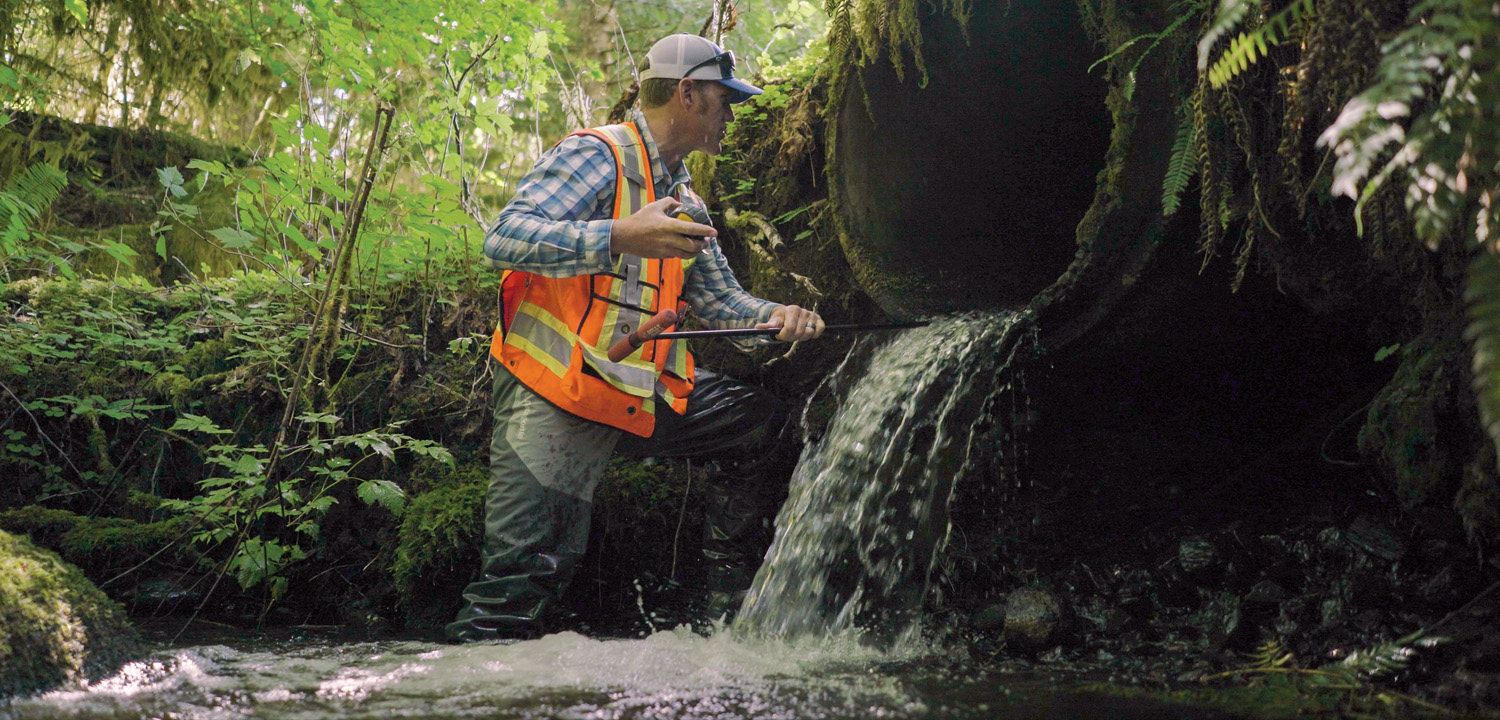By removing mini-dams and reconnecting the coldest, cleanest rivers on Washington’s Olympic Peninsula, we’re helping salmon and steelhead return home.
Where the lush rainforest meets the sea on the Olympic Peninsula, Washington’s coastal rivers produce the most abundant and diverse wild Pacific salmon populations remaining south of Canada. Fifty percent of the state’s non-endangered wild salmon swim home to rivers that cascade down from the towering, rugged Olympic Mountains. And climate projections show that water here will remain cold enough to sustain salmon, even as temperatures climb toward the end of this century.
But, these stronghold rivers are still fractured by outdated and impassable culverts that act like miniature dams. There are over 4,000 documented barriers in coast rivers alone. These barriers are cutting off access to key cold water refuges that juvenile and returning salmon and steelhead need to ride out increasingly intense summer heat waves. (For more on the complex story of Olympic Peninsula steelhead, read “Steelhead Season“—Part I in our investigative Heart of Steel series.)

TARGETING HIGH-PRIORITY STREAMS
Using our latest salmon habitat maps and a thorough ground survey with our partners at Trout Unlimited and Coast Salmon Partnership, we’ve pinpointed the most important investments to reconnect to cold water. Working with these partners and others, we will remove barriers and reconnect 125 miles of blocked habitat over the next five years, including sections of three of Washington’s most iconic salmon watersheds—the Hoh, Quillayute, and Queets.

The partnership is developing shovel-ready projects for high-priority barriers as part of a larger effort to fully restore coastal watersheds. Our effort will help put people to work restoring watersheds. And by improving the health and resiliency of salmon and steelhead populations, we will boost coastal ecosystems, economies and communities that all depend on salmon.
We have an opportunity to shore up coastal strongholds for salmon. We’re ready to reconnect these fish to some of the last best cold water refuges. Let’s get to work!
